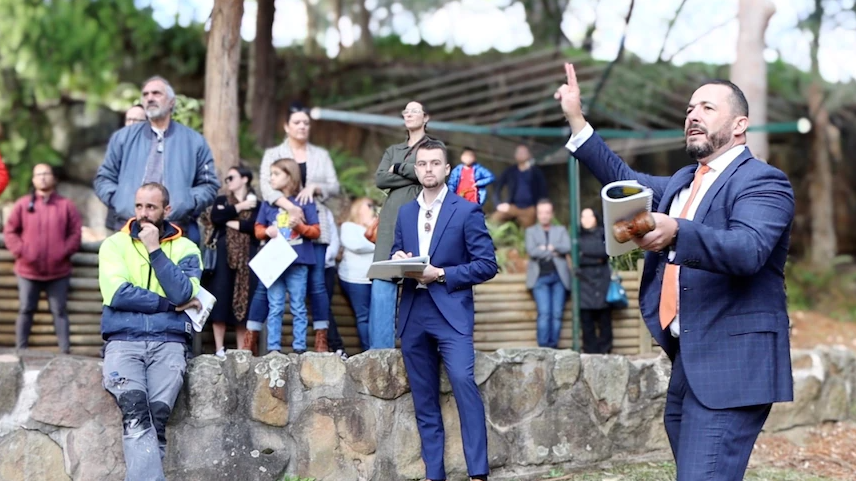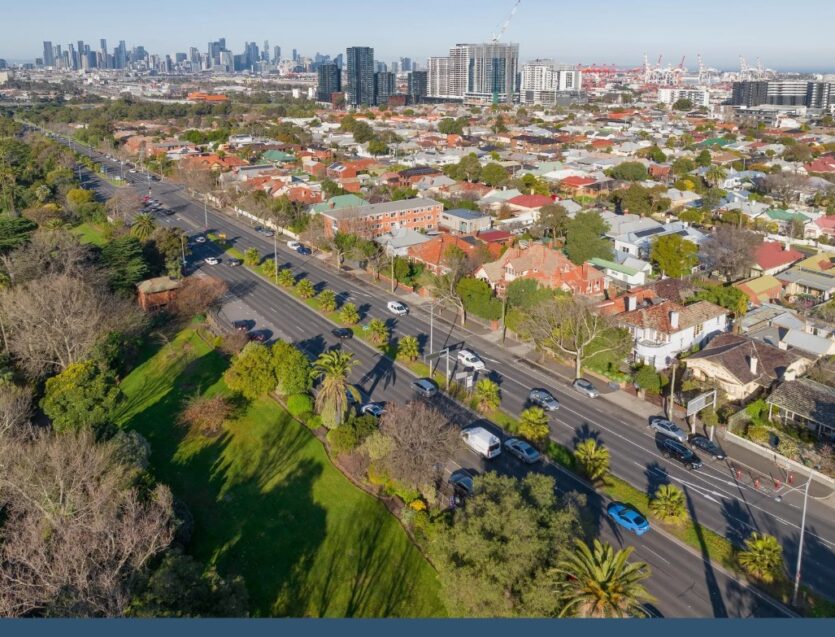Property boom sees investors return to the market, adding to the pain of first-home buyers
Article by: Rhiana Whitson, Reporter
Source: ABC News
June 01, 2021

It’s a sunny Saturday morning in suburban Sydney and a nervous group of would-be buyers and onlookers watch as the price of a five bedroom brick house climbs higher and higher.
Half of the eight registered bidders are investors.
But in the end it’s owner-occupier Simon Isaacs who places the winning bid. A cool $1.5 million, about $300,000 over the reserve.
How does Mr Isaacs feel? “Really good, because in my head I thought ‘we are not going to get it,'” he said.
He was worried about being outbid by an investor.
“You hear people ask ‘how much could I rent this out for’ and you think ‘wow, we are a family and there is someone wanting to buy it to rent it out,'” he said.

Real estate agent at Ray White Sutherland Shire, Adam Crawley, said landlords are trickling back into the market and pushing up property prices as a result.
“Obviously they see the growth in house prices as a good way to build wealth,” he said.
Investors are back in town
If you believe the forecasts of some analysts there is serious money to be made.
Many economists think house prices could go up 20 per cent in some markets by the end of 2022.
Most of the growth in the housing market is being driven by owner-occupiers.
However, after investor credit growth actually went backwards on a month-to-month basis last year due to COVID-19, it is edging towards the same levels as when the regulator APRA intervened in 2017 and tightened lending requirements.
In March, there was a 12 per cent monthly increase in investor loans, while the number of first home buyer lending commitments dropped by 3 per cent, according to the Australian Bureau of Statistics.
‘Never been a better time to invest’
Strong capital gains, record low interest rates and a volatile stock market are once again making investing in bricks and mortar irresistible for those who can.
Property investor and buyer’s agent Matt Chamberlain in Newcastle is one of them.
He owns two rental properties; a property in Brisbane that he’s never seen in person and a house in Newcastle.
“The biggest pro [to investing in property] is access to leverage. Through borrowing you are able to invest and control a larger asset than if you invested in shares,” he said.
Real estate agent Russell Dawson from PRD Newcastle said regional markets were attracting an influx of investors.

“We are getting a frenzy at that end of the market, because it is a good time to be getting a foothold or extending a portfolio as well,” he said.
Rental yields for houses in Newcastle are an average of 3.5 per cent.
Not so long ago that would’ve been considered a poor return, but record low interest rates have changed that perception.
“As the interest rates have been dropping, and the yield rates are increasing that’s just leading to an increased return for investors,” Mr Dawson said.
Banks cut rates for landlords
The banks are also adding to the investor frenzy.
National Australia Bank (NAB) announced on Friday that it was cutting its variable principle and interest rate for investors by 30 basis points to 2.79 per cent.
That’s the lowest variable rate of a loan in that category with the big four banks, and comes after NAB had the largest drop of any bank in investment loans last year.
The lowest variable interest rate across all banks is 1.89 per cent with Northern Island Credit Union, according to RateCity.com.au.

RateCity’s research director Sally Tindall said banks are competing for a share of the investor pie.
“We are seeing record low investor rates. Where we are seeing them creep up is the those longer term fixed rates.”
“But it’s a different story for short term rates, which is further facilitating this growth in investing lending,” she said.
| Number of lenders that have cut rates for investors | Number of lenders that have hiked rates for investors | |
|---|---|---|
| Variable | 19 | 6 |
| 1 year fixed | 11 | 4 |
| 2 year fixed | 17 | 4 |
| 3 year fixed | 11 | 6 |
| 4 year fixed | 0 | 12 |
| 5 year fixed | 2 | 8 |
Ms Tindall acknowledged that’s bad news for first-home buyers.
“It seems like investors could be muscling in at the expense of first-home buyers and low-income earners who just don’t have as much money as investors to compete at auctions,” Ms Tindall said.

In Newcastle, Matt Chamberlain said investors were not solely to blame.
“Fortune favours the brave. However, if you were to dive into the numbers, the most interest in property is being fuelled by first-, second- or third-home buyers,” he said.
Despite the risks that could arise if investors pile back into property, adding further fuel to a very hot market, APRA and the Reserve Bank have shown no urgency to cool house prices.
Instead, the regulators said they’re keeping an eye on lending standards.
“They could step in with certain caps on investors, but I think we are a long way from that. I think any caps would not happen until 2022,” Ms Tindall said.
Until then, expect property prices to become even more unaffordable for first home buyers.



Currently, Perth is the capital city that our research is driving our clients to for optimal investment outcomes. Keep an eye out for our upcoming report on Victoria, and the opportunities we feel this market will present from early to mid-2025. CPA Property Reports are the ultimate research tool for those considering an investment into the any Australian property market.